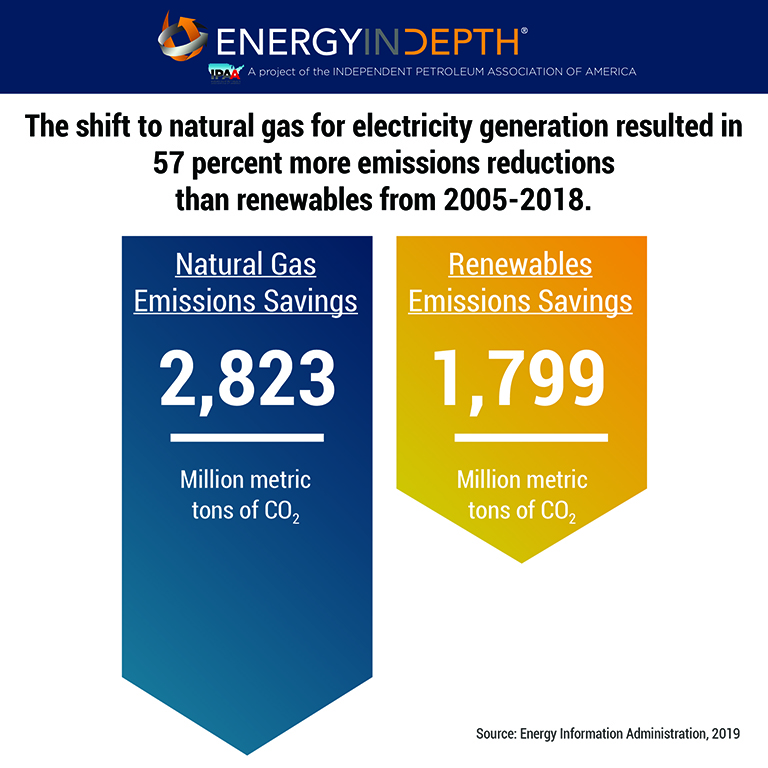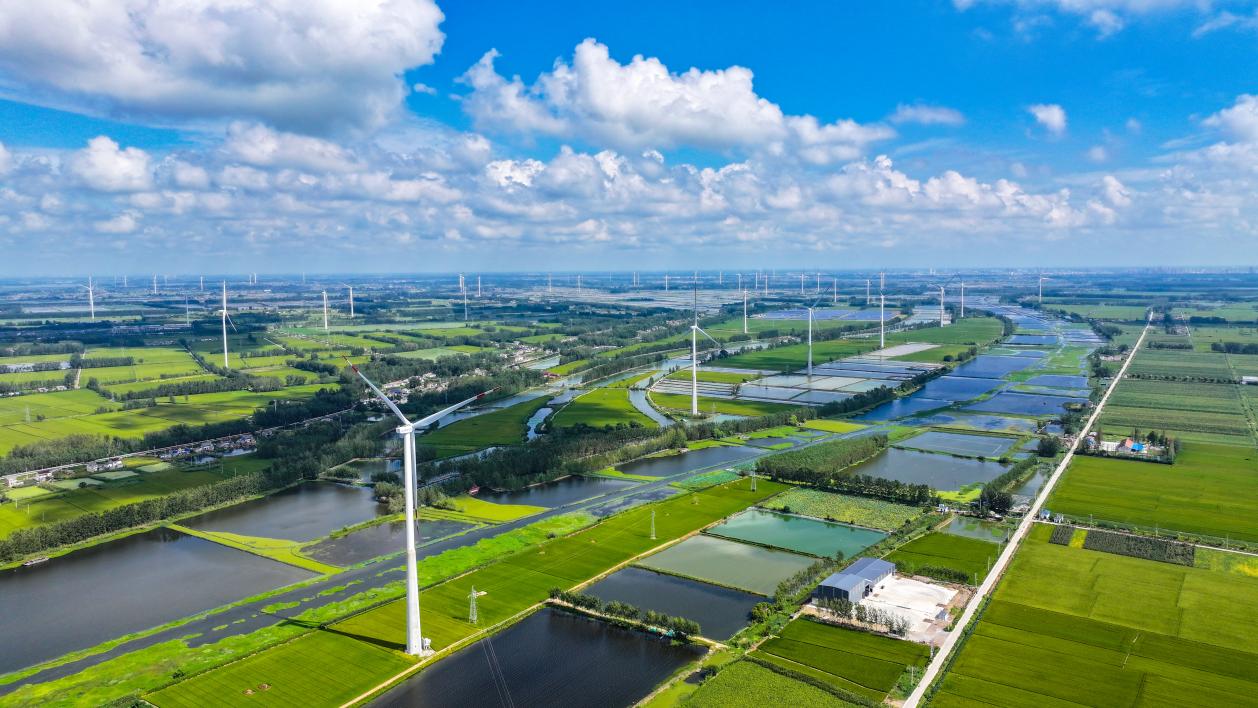Where America’s CO2 emissions come from – what you need to know, in charts – Cobb Courier

Report on Carbon Dioxide Emissions and Their Implications for Sustainable Development Goals
Introduction: The Dual Role of Carbon Dioxide and the Urgency of Climate Action
Carbon dioxide (CO2) is a fundamental component of Earth’s atmosphere, essential for photosynthesis and for maintaining a habitable planetary temperature. However, since the industrial revolution, anthropogenic activities have drastically increased atmospheric CO2 concentrations by over 50%, posing a significant threat to global stability and undermining the achievement of the United Nations Sustainable Development Goals (SDGs).
The Impact of Rising CO2 Emissions on Key SDGs
The escalating concentration of CO2 is the primary driver of global warming, which precipitates a range of environmental crises that directly challenge several SDGs.
- SDG 13 (Climate Action): The core challenge is the intensification of climate change. Rising temperatures accelerate the water cycle, leading to more frequent and severe floods, droughts, heat waves, and wildfires.
- SDG 14 (Life Below Water): The ocean absorbs a significant portion of excess CO2, causing ocean acidification. This process harms marine ecosystems, particularly shell-forming organisms, threatening the marine food chain and the sustainability of fisheries.
- SDG 15 (Life on Land): Climate change impacts terrestrial ecosystems through events like wildfires and altered weather patterns, threatening biodiversity and the vital services provided by forests and other habitats.
- SDG 11 (Sustainable Cities and Communities): Increased frequency of extreme weather events and rising sea levels pose direct threats to human settlements, infrastructure, and livelihoods, particularly in coastal areas.
Analysis of United States CO2 Emission Sources
In 2022, the United States emitted 5,053 million metric tons of CO2, with fossil fuel combustion accounting for 93% of this total. A sectoral breakdown reveals critical areas for intervention to meet SDG targets.
Emissions by Economic Sector
The distribution of emissions highlights the need for systemic changes in infrastructure, energy, and consumption patterns, directly relating to several SDGs:
- Transportation (35%): The largest source, primarily from petroleum products, underscores the need for a transition to sustainable transport systems under SDG 11.
- Electric Power Generation (30%): This sector’s reliance on fossil fuels is a major barrier to achieving SDG 7 (Affordable and Clean Energy).
- Industry (16%): Industrial emissions point to the need for cleaner production processes and resource efficiency, as targeted by SDG 9 (Industry, Innovation, and Infrastructure) and SDG 12 (Responsible Consumption and Production).
- Residential and Commercial Buildings (7% and 5% respectively): Emissions from buildings highlight the importance of energy efficiency and sustainable building design in achieving SDG 11.
Role of Natural Carbon Sinks
While U.S. forests play a crucial role in supporting SDG 15 by removing approximately 920 million metric tons of CO2 in 2022, this natural sequestration is insufficient to offset the nation’s total emissions.
National Emission Trends and Progress Towards SDG 7
U.S. CO2 emissions peaked in 2005 and have since shown a modest decline, largely due to the replacement of coal with natural gas in electricity generation. However, several trends will determine future progress towards climate and energy goals.
- Energy Efficiency: The U.S. economy has demonstrated increased energy efficiency, a key target of SDG 7, by increasing productivity while reducing emissions intensity.
- Growth in Renewable Energy: The steady expansion of solar and wind power offers a clear pathway to achieving SDG 7. These sources are now more cost-effective than new fossil fuel plants, presenting a significant opportunity for decarbonization.
- Emerging Challenges: Progress is threatened by policy shifts that reduce support for renewable energy and by rising electricity demand from sectors like data centers. Meeting this new demand with clean energy is critical for staying on track with SDG 13.
Global Emissions Context and SDG 17 (Partnerships for the Goals)
A global perspective is essential for addressing climate change, as greenhouse gases affect the entire planet regardless of their origin.
- Comparative Emissions: In 2022, the U.S. was the world’s second-largest CO2 emitter, after China. However, the U.S. remains the largest cumulative emitter in history and maintains one of the highest per capita emission rates among industrialized nations.
- Global Responsibility: The disproportionate impact of emissions from industrialized nations on developing countries highlights the principle of common but differentiated responsibilities. Achieving global climate targets requires robust international cooperation and partnerships, as envisioned in SDG 17.
Conclusion: An Urgent Call for Accelerated Climate Action
The data indicates an urgent need to accelerate the reduction of CO2 emissions across all sectors to mitigate climate change and achieve the Sustainable Development Goals. While the technological means for a large-scale transition to clean energy exist, political will and strategic investment are required to overcome existing barriers. Given that CO2 persists in the atmosphere for centuries, decisions made today will have a profound and lasting impact on the global climate and the well-being of future generations.
Analysis of Sustainable Development Goals in the Article
1. Which SDGs are addressed or connected to the issues highlighted in the article?
-
SDG 7: Affordable and Clean Energy
The article extensively discusses energy sources, contrasting the combustion of fossil fuels (oil, natural gas, coal) for electricity and transportation with the growth of clean energy alternatives like solar and wind. It addresses the shift in the energy mix, driven by cost and policy.
-
SDG 12: Responsible Consumption and Production
This goal is relevant through the article’s focus on the consumption of fossil fuels and the discussion of energy efficiency. The text notes that “the U.S. economy has become more energy efficient over time, increasing productivity while decreasing emissions,” which directly relates to more sustainable production patterns.
-
SDG 13: Climate Action
This is the central theme of the article. It details the causes of climate change (excess CO2 from human activities), its effects (global warming, accelerated water cycle, sea-level rise, extreme weather), and tracks national and global emissions, aligning perfectly with the call for urgent climate action.
-
SDG 14: Life Below Water
The article makes a direct connection to this goal by stating, “The ocean also absorbs some of that CO2, making the water increasingly acidic, which can harm species crucial to the marine food chain.” This highlights the impact of atmospheric carbon on marine ecosystems.
-
SDG 15: Life on Land
The role of terrestrial ecosystems is addressed when the article mentions the impact of climate change through an “increasing frequency or intensity of wildfires” and the mitigating role of forests, noting that “U.S. forests are removing CO2 from the atmosphere.”
2. What specific targets under those SDGs can be identified based on the article’s content?
-
Target 7.2: Increase substantially the share of renewable energy in the global energy mix.
The article supports this by discussing the growth of clean energy: “solar and wind energy generation, while still a modest fraction of total energy production, has grown steadily in recent years and emits essentially no CO2 into the atmosphere.” It also notes that relying more on renewables will “dramatically reduce its CO2 emissions.”
-
Target 12.2: Achieve the sustainable management and efficient use of natural resources.
This target is addressed through the discussion of fossil fuel consumption. The article details the sources of CO2 emissions as the “combustion of fossil fuels – oil, natural gas and coal.” It also points to improvements in efficiency, stating the “U.S. economy has become more energy efficient over time.”
-
Target 13.1: Strengthen resilience and adaptive capacity to climate-related hazards and natural disasters.
The article identifies the need for this by listing the consequences of climate change: “We are living with an increasing frequency or intensity of wildfires, heat waves, flooding and hurricanes, all influenced by increasing CO2 concentrations in the atmosphere.”
-
Target 13.2: Integrate climate change measures into national policies, strategies and planning.
This is reflected in the discussion of U.S. national trends and policies. The article mentions the “replacement of coal by natural gas in electricity production” as a driver for emission reduction and discusses how administrative policies, such as “cutting federal support for renewable energy” and providing “subsidies for fossil fuels,” impact national CO2 emissions.
-
Target 14.3: Minimize and address the impacts of ocean acidification.
The article directly points to this target by explaining that the ocean absorbs excess CO2, “making the water increasingly acidic, which can harm species crucial to the marine food chain.”
-
Target 15.2: Promote the implementation of sustainable management of all types of forests.
This is relevant through the article’s mention of the role of forests in carbon sequestration. It states, “U.S. forests are removing CO2 from the atmosphere… U.S. forests removed and stored about 920 million metric tons of CO2 in 2022,” highlighting the importance of forests in mitigating climate change.
3. Are there any indicators mentioned or implied in the article that can be used to measure progress towards the identified targets?
-
Total Greenhouse Gas Emissions
The article is rich with data on this indicator. It specifies that the “U.S. emitted 5,053 million metric tons of CO2 into the atmosphere in 2022” and that U.S. emissions peaked in 2005 at “6,217 million metric tons of CO2.” It also provides global context, noting China emitted “about 12,000 million metric tons of CO2.”
-
Greenhouse Gas Emissions per Capita
This indicator is explicitly mentioned when comparing nations: “we still emit more CO2 per person than most other industrialized nations. Chinese and European emissions are both roughly half of U.S. emissions on a per capita basis.”
-
Share of Renewable Energy in Total Energy Production
While not providing a specific percentage, the article implies this indicator by noting that “solar and wind energy generation… has grown steadily in recent years” and that this growth is a key factor in reducing emissions.
-
Carbon Sequestration by Forests
A precise figure is provided for this indicator: “U.S. forests removed and stored about 920 million metric tons of CO2 in 2022.” This measures the contribution of forests to climate mitigation.
-
Atmospheric Concentration of CO2
The article uses this as a primary indicator of the problem, stating that the “atmospheric concentration of CO2 has risen by more than 50%” since the industrial revolution.
-
Ocean Acidity
This is mentioned as a direct consequence of CO2 absorption. The article describes the ocean “making the water increasingly acidic,” which implies that measuring ocean pH is a relevant indicator.
4. Table of SDGs, Targets, and Indicators
| SDGs | Targets | Indicators Identified in the Article |
|---|---|---|
| SDG 7: Affordable and Clean Energy | 7.2: Increase substantially the share of renewable energy. | – Steady growth of solar and wind energy generation. – Replacement of coal by natural gas in electricity production. |
| SDG 12: Responsible Consumption and Production | 12.2: Achieve the sustainable management and efficient use of natural resources. | – U.S. economy becoming more energy efficient. – Consumption of fossil fuels (oil, natural gas, coal) by sector. |
| SDG 13: Climate Action | 13.1: Strengthen resilience to climate-related hazards. 13.2: Integrate climate change measures into national policies. |
– Total CO2 emissions (e.g., U.S. emitted 5,053 million metric tons in 2022). – Per capita CO2 emissions. – Atmospheric CO2 concentration (risen by over 50%). – Increasing frequency/intensity of wildfires, heat waves, flooding. |
| SDG 14: Life Below Water | 14.3: Minimize and address the impacts of ocean acidification. | – Ocean absorption of CO2 making water “increasingly acidic.” |
| SDG 15: Life on Land | 15.2: Promote sustainable management of all types of forests. | – Amount of CO2 removed by forests (U.S. forests removed 920 million metric tons in 2022). |
Source: cobbcountycourier.com

What is Your Reaction?
 Like
0
Like
0
 Dislike
0
Dislike
0
 Love
0
Love
0
 Funny
0
Funny
0
 Angry
0
Angry
0
 Sad
0
Sad
0
 Wow
0
Wow
0










/campaigns/16-days-of-activism-against-gender-based-violence/pr-web-banner.tmb-1200v.jpg?sfvrsn=8cc7b98e_1#)


































































